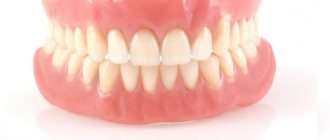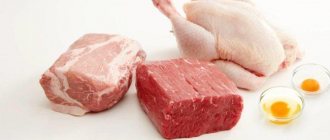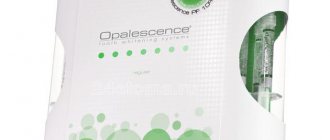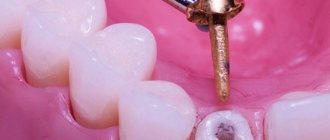How to choose a method for cleaning a frying pan
To properly clean an old frying pan from carbon deposits, first of all, determine what material it is made of. There are cast iron, aluminum and stainless steel frying pans.
In modern industry, cookware with non-stick coating is gaining increasing popularity. She requires careful and delicate care. Such pans are easy to clean, as their surface protects against the formation of carbon deposits on the dishes.
How does carbon deposits form on the coating of a frying pan?
Almost every day, meat is fried and stewed in a frying pan, and vegetables are sautéed. Frequent use of dishes leads to the formation of carbon deposits. This happens for the following reasons:
- small drops of boiling oil or melted fat fall on the walls;
- food particles stick to the bottom, and sometimes food burns;
- an open flame promotes the formation of soot.
It is better to wash any dishes immediately.
Even if you thoroughly wash the frying pan every time after use, you will not be able to avoid the formation of soot.
Traditional methods against soot in a frying pan
At home, you can use improvised means that are always available in the kitchen. They safely allow you to clean the inside of the frying pan from carbon deposits.
The prepared table will help determine contraindications for using a particular cleaning product for a specific type of frying pan.
Citric acid, vinegar and washing powder
The method involves use with different approaches.
- When the deposits on the dishes are fresh enough, lemon will do its job perfectly. To do this, you need to place the frying pan in the solution (for 1 liter of water - 1 tablespoon of citric acid). Boil for 20-30 minutes. Rinse with warm water.
- You can add vinegar to the prepared solution. Boil the frying pan in this water for 10-15 minutes. Turn off the heat and clean the dishes with a sponge after 2 hours. Then you can add washing powder to the same composition, bring to a boil, and leave for another 1 hour. Rinse with warm water.
- If there are damages and scratches on the frying pan, it is better not to boil the dishes. After each time of use, it is enough to wipe with a sponge soaked in a weak solution of acetic acid.
Important! The method cannot be used to clean aluminum pans, as well as dishes with damaged coating.
Coca Cola
The carbonated drink has long established itself as an excellent means for cleaning pots and pans. Just pour Coca-Cola into a bowl, bring to a boil and after 15 minutes turn off the stove. Leave it like this until it cools completely.
Important! The method is ideal for cleaning cast iron and stainless steel cookware.
Mustard powder
In Soviet times, mustard was valued as the most effective means of removing fat. To do this, a frying pan or saucepan was heated over a fire. They covered the bottom with mustard powder and scrubbed it off. After 20 minutes, wash off with water.
If it was not possible to wash it the first time, then the dishes were soaked in mustard solution for 40 minutes. Then washed again.
Cleaning and boiling in salt solution
Cleaning with salt is suitable for almost any dishware.
- Salt is poured onto the bottom of the frying pan (can be used together with sand).
- Lightly moisten and let stand for at least 2 hours. Sponge.
- If this does not help, you must immediately add water and boil. Perhaps this option will be more effective.
For your information! Do not apply to Teflon and ceramic cookware.
Using hydrogen peroxide, baking soda or soda ash
- Baking soda will help clean the pan from years of carbon deposits. Place a frying pan in a container with boiling water and soda. Reduce the heat to low and leave for 30 minutes. Then turn it off. Let it sit for another half hour. The dishes are washed with warm water.
- If this method does not help, add hydrogen peroxide and a few drops of dishwashing detergent to the soda solution. Leave for another 30-45 minutes. Rinse thoroughly with water several times. The method is actively used for cleaning non-stick frying pans.
Another option (always effective) is when glue and soap are added to the soda solution (see recipe above).
Ammonia and borax for cleaning cast iron surfaces
If food is badly burnt, the prepared solution will help to cope with the soot.
- For 300 ml of water, take ammonia and 12 g of borax.
- This mixture is poured onto the burnt surface.
- After 1 hour, the liquid is drained, the carbon deposits should easily come away from the surface.
- Kitchen utensils are washed and wiped.
Action
Baking soda and peroxide react to form a clear liquid. The molecules of this alkaline solution act on acids and eliminate them. Due to bactericidal, microbes or bacteria contained on the surface are eliminated.
The two products can also be combined with salted water or alcohol. These components are added to a solution of soda and peroxide to enhance the cleaning effect or add shine. However, they must be washed with gloves to avoid irritation on the skin.
Removing carbon deposits from a frying pan using household chemicals
It is advisable to choose a dish cleaning product that does not contain abrasive substances. It is better to use household chemicals to clean the outside of the frying pan. To clean the inside of the dishes, it is safer to use folk remedies.
- Schumannite is one of the most powerful grease cleaners. Contains alkali. Copes with even the most stubborn stains on cast iron, enameled and metal products.
- "DazhBo" is a washing liquid suitable for cleaning any surface.
- "Easywork" - copes well with any dirt.
- "Unicum" is a universal cream for cleaning dishes. It has a pungent odor, but is capable of cleaning even the most multi-layered deposits in 2 minutes.
- Frosch is a plant-based cleaner. Has a convenient sprayer. It is in great demand among housewives.
The use of any chemical means compliance with safety measures. Therefore, before you start cleaning dishes with a chemical composition, you must wear rubber gloves. If the procedure is carried out at home, you should open a window or vent in the kitchen.
How to clean rust from a cast iron frying pan at home
The most effective ways to combat rust are:
- Use of household chemicals. The most popular products are Silit, Anti Calc, Scrubman.
- Cleaning with Coca-Cola. Since soda contains phosphoric acid, the liquid can remove rust from cast iron surfaces. The procedure is as follows:
- The pan is cleaned with sandpaper;
- remove grease with dishwashing detergent;
- rinse with running water and wipe dry;
- Place the dishes in a large container and fill them with soda;
- bring to a boil;
- remove from the stove, cool;
- the cleaned surface is washed and dried;
- if dirt remains, the manipulations are repeated.
- Use of folk remedies:
- baking soda is mixed with water, then applied to problem areas, after 30 minutes the pan is cleaned with a metal sponge;
- mix salt and lemon juice and treat cast iron with the resulting product (you need to wait 2-3 hours);
- add a 9% solution of vinegar to the water in a 1:1 ratio, then lower the frying pan into the liquid and leave for 30 minutes, then clean the surface with a sponge and salt;
- take a potato tuber and divide it into two parts, sprinkle the cut areas with salt and apply it to a rusty dish (keep for half an hour).
Peeling with potatoes and salt
Recommendations from experts
Manufacturers of cookware recommend adhering to rules that help extend the life of the frying pan. It is important to follow preventive measures that prevent further contamination.
- When cooking and stirring food in a frying pan, you must use a wooden or plastic spatula.
- Use cleaning powders, scratching sponges, and scrapers as little as possible. This will prevent scratches on the inside of the pan.
- If the frying pan is often washed in the dishwasher, then you must clean it by hand once a month. In this case, you can easily notice the appearance of soot, which can be easily eliminated at the initial stage of its manifestation.
- Melamine sponges are well suited for cleaning ceramic products and enamel dishes. But they can only clean the outside.
- An aluminum frying pan should never be rubbed with an iron sponge. The damaged surface quickly oxidizes and the oxide gets into the food. Which will negatively affect human health.
- Baking soda or coarse salt helps get rid of rust on an old frying pan. After washing, be sure to heat the dishes so that the food does not burn.
Effect of baking soda and hydrogen peroxide
The soda molecule is made up of sodium, hydrogen, carbon and oxygen. All its properties are based on the combination of these elements. It quickly dissolves in water, converting it into an alkaline solution. Has a bactericidal effect, neutralizes acid content.
The peroxide molecule contains oxygen and hydrogen. An aqueous solution is used in everyday life, which has the following properties:
- Easily mixes with water and alcohol-containing liquids.
- Has disinfecting and bleaching effects.
- Able to interact with alkalis and oxidizing agents.
Using hydrogen peroxide with baking soda powder in the household has a number of advantages over chemicals, which are not always safe. It is impossible to be completely sure that after washing the dishes, table or refrigerator, they did not remain on the surface. Contact of food with dangerous chemical elements can cause severe food poisoning.
Benefits of sodium bicarbonate and peroxide:
- They have a low cost.
- The products are safe for people and the environment, and can be used even if you are prone to allergic reactions.
- Negatively affects most bacteria.
- Eliminates unpleasant odors.
- They quickly dissolve grease, carbon deposits and other contaminants, so they can be used for cleaning various dishes and cutlery.
- Quickly deal with rust on taps.
- Easily washed off and does not damage the surfaces being cleaned.
- Can be mixed with other ingredients: salt, sugar, lemon, toothpaste, soap.
Peroxide and baking soda are used for more than just cleaning dishes and surfaces. If you add a little soda powder to the water prepared for washing vegetables or fruits, all hazardous substances will quickly be washed out of the peel. After this procedure, you need to rinse the products well.
40-50 g of peroxide added to the dishwasher will help better wash and disinfect dishes and other kitchen utensils. To clean kitchen sponges, you need to soak them for several minutes in a solution made from peroxide and baking soda powder, taken in equal parts.
Preparing to Clean an Old Cast Iron Frying Pan
Before you wash an old frying pan, you should determine what material the container is made of. This will help you choose the right cleaning method, the right product, and the right scraper. In most cases, old fat can be dealt with using improvised means available in every home. The most important thing is to choose a method that suits your existing pan. After all, the same product that cleans a cast iron container can ruin a Teflon or ceramic one.
Cast iron and aluminum containers are not afraid of harsh cleaning and tolerate the use of abrasive powders and rough paper clips.
Using office glue
Add water to the dirty bowl so that it fills half of it. Add to it a small part of a pack of soda and a whole jar of PVA glue. Stir well and put the product on the fire. Bring to a boil, hold for another half hour, then leave to cool. After a couple of hours, the container should be freed from dirt and rinsed thoroughly.
In 3 liters of warm water, dissolve a third of grated laundry soap, 100 grams of soda, and 120 g of silicate glue. We load the dishes that require cleaning into the tank, put them on the fire and wait until they boil. It should boil for half an hour, and then you need to turn off the heat and let it cool.
If the dirt has not yet completely left behind, leave the products in the water. Or you can take the pans out to cool in the air. As soon as they become slightly warm, you should rinse them a couple of times under running water.
In a large bowl of warm water, dilute 100 g of PVA glue and 110 g of sodium carbonate. After stirring the ingredients until dissolved, add the burnt items into the bucket. Place the bowl on the stove and wait until it boils.
After the liquid boils, turn it off and leave to cool. The dirt should fall off and end up in the water, but if there is some layer left on the walls, it can be removed with a sponge.
The following method is suitable for very advanced cases. Take a large fireproof bucket and pour 8 liters of water.
Dissolve a glass of soda, grated half of soap, and a bottle of silicate glue in the liquid, stir thoroughly. Place the pot or frying pan that needs cleaning into the container and start boiling.
The boiling time will depend on the extent of the contamination: some pots will become clean in half an hour, while others will take an hour or more to regain their original appearance. When all the dishes are clean, turn off the heat and leave for another hour until it cools completely. After this, rinse the pans under running cool water.
Why office glue and soda clean utensils well
Not everyone knows that many substances can be used for other purposes than their intended purpose. Stationery glue is used to connect fabric, paper and other surfaces, and it is also used to clean kitchen utensils. It contains synthetic and natural polymers that soften existing plaque, break up soot and dissolve fats, and remove calcium deposits.
Dirt can be easily removed with a spatula or washed off with hot water. Cleaning dishes in this way at home does not take much time, the main thing is to choose the appropriate type of stationery glue:
- Silicate glue contains trace elements (sodium, potassium), soda, and quartz sand. This composition copes well with a dense layer of carbon deposits on frying pans and pots.
- PVA contains acetone and polyvinyl acetate. The first component actively fights all kinds of contaminants and dissolves old fat. Helps wash dishes after large feasts, skewers and grill grates after kebabs and barbecues.
In its pure form, liquid glue is not suitable for cleaning dishes. It is supplemented with other components, such as laundry soap, soda, and hydrogen peroxide. Such mixtures are more effective. One ingredient enhances the effect of another. The end result is a perfect result.
Rules for cleaning frying pans depending on the material and tips for prevention
Different types of metals and coatings react differently to acids and alkalis, prolonged soaking and heating. When starting to wash your frying pan, find out the contraindications (if you are looking at the table on your smartphone, turn it to a horizontal position - this way the entire table will fit on the screen).
| Cast iron cookware | Teflon cookware | Stainless steel | Aluminum cookware without non-stick coating and enamel | |
| Dishwasher safe | Not possible (the pan will become rusty) | Can | Can | It is forbidden |
| Using abrasive cleaners, brushes, scrapers and hard sponges | Can | It is forbidden | Can | It is forbidden |
| Using baking soda, laundry soap and other alkaline cleaning products | Can | Can | Can | It is forbidden |
| The use of acids (vinegar, citric acid, etc.) | Can | Not allowed (short-term exposure is acceptable) | Can | Not allowed (short-term exposure is acceptable) |
| Long soaking | It is forbidden | Can | Can | Undesirable |
- Aluminum frying pans (without coating) can be washed with cleaning products for glass and porcelain dishes, soap solutions with the addition of ammonia.
- Any dishes should be washed only after they have cooled naturally. If you suddenly transfer a hot frying pan into cool water, it may become deformed. This is especially true for cast iron, aluminum (coated and uncoated) and ceramic frying pans.
- Before soaking or boiling the pan, be sure to remove the wood/plastic handle or simply do not submerge it in water.
How to care for a cast iron frying pan. Pollution prevention
The pan must be washed properly. After cooking, any leftover food is removed and the dishes are cooled. Next, pour the cast iron utensils with warm water with the addition of soap or a special detergent, leave for half an hour and rinse with running water. Then the dishes are dried and wiped with a towel.
To prevent contamination you will need:
- Every time after cooking, rinse the pan thoroughly.
- Use non-aggressive detergents.
- Wash dishes from all sides - both inside and outside.
- Regularly restore the non-stick coating.
- Avoid soaking dishes for a long time.
- Store dishes in a dry place.
- Do not store ready-made dishes in a frying pan, as the oxidation process breaks the protective layer.
We use soda with hydroperite in the bathroom:
- In pharmacies you can buy perhydrol, which in equal proportions with water will help you cope with mold and mildew, which often occurs on the walls and ceiling in the bathroom. This occurs due to high humidity.
- Every housewife has encountered the fact that the curtain in the bathroom is not easy to clean from mold stains. Now you don’t even care about this problem. When washing, add one bottle of peroxide to a container of water - after half an hour, you will see a new, clean curtain that does not have any unnecessary odors and there will not be a single speck of mold or mildew on it
- Another advantage of a substance based on perhydrol is the removal of rust from all plumbing fixtures. To remove these hated stains, you just need to mix water with peroxide in one bowl, 100 mg each. After this, apply the drug to the stain and leave for half an hour. After this time, you will be stunned by the results.
Simple ways to clean dishes
Soda, glue - such products can be found in every home, so the recipes for cleaning containers presented below will not be difficult for you.
Method No. 1
Prepare a large metal basin or any fireproof container, which you fill with about 20 liters of warm water. Add 400 g of silicate glue to the liquid (it is sold in 200 g jars), half a kilogram of soda ash.
The mixture must be stirred thoroughly, and then the dishes requiring cleaning should be placed in it. All this needs to be put on the stove and boiled for an hour. After the allotted period, you will see pans free of black deposits, which you will then simply need to rinse under tap water.
Method No. 2
This method is suitable if you need to clean 1-2 containers. Fill a bucket with warm water, add 150 g of soda ash, 100 g of office glue. Place dirty containers into the solution, boil, then turn off the heat and leave the dishes to cool. Next, you need to arm yourself with a knife or small spatula and remove the layer of dirt from the pans.
Method No. 3
Fill a large saucepan at room temperature with water (about 4 liters), add a spoonful of glue and a third of a piece of laundry soap, grated or crushed, to the water. Place a dirty pot or frying pan into the solution and boil for half an hour.
Next, you can remove the containers immediately, or you can wait until they cool down. The cleaning process is completed by rinsing under cold water.











